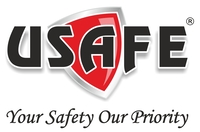Fire Extinguishing Agents: Keeping You Safe in Case of Emergency
Understanding the Role of Fire Extinguishing Agents in Fire Safety
Welcome to a world where safety is paramount, and protecting lives and property from the devastating effects of fire is of utmost importance. In this article, we will explore the fascinating world of fire extinguishing agents and their crucial role in safeguarding our surroundings. Whether it's in our homes, workplaces, or public spaces, understanding these agents can empower us to respond effectively during emergencies and potentially save lives. So let's dive in and unravel the mysteries behind fire extinguishing agents!
What are Fire Extinguishing Agents?
Fire extinguishing agents are substances specially designed to suppress and extinguish fires. They are formulated to target different types of fires based on the fuel involved. Fires can be classified into various categories, including Class A (ordinary combustibles like wood and paper), Class B (flammable liquids), Class C (electrical fires), and Class K (cooking oils and fats). Fire extinguishing agents are carefully selected to combat each class of fire efficiently and effectively.
Different Types of Fire Extinguishing Agents:
Water:
Water is a classic fire extinguishing agent and is primarily used to combat Class A fires. It cools down the fire and removes heat, thereby suppressing the flames.
Foam:
Foam agents are highly effective for Class A and Class B fires. They create a barrier between the fire source and oxygen, smothering the flames and preventing re-ignition.
Carbon Dioxide (CO2):
CO2 is commonly used for Class B and Class C fires. It works by displacing oxygen, thus depriving the fire of the oxygen it needs to sustain itself.
Dry Chemicals:
Dry chemical agents, such as monoammonium phosphate or sodium bicarbonate, are versatile fire extinguishers suitable for combating Class A, Class B, and Class C fires. They interrupt the chemical reactions occurring in the fire, extinguishing it.
Wet Chemicals:
Wet chemical agents are specifically designed for Class K fires, which involve cooking oils and fats. They react with the burning oil to form a soapy layer, effectively smothering the fire and preventing re-ignition.
FAQs (Frequently Asked Questions):
Q1: Can fire extinguishing agents cause damage to property?
A1: While fire extinguishing agents are essential for combating fires, they can cause some damage to property due to the force or chemicals involved. However, this damage is minimal compared to the potential devastation caused by an uncontrolled fire.
Q2: Can fire extinguishing agents be harmful to humans?
A2: Fire extinguishing agents are generally safe for humans when used correctly. However, it is important to follow safety guidelines and avoid inhaling excessive amounts of certain agents, such as carbon dioxide. It is always advisable to evacuate the area and allow professionals to handle the situation whenever possible.
Q3: How often should fire extinguishing agents be inspected?
A3: Regular inspections and maintenance of fire extinguishing agents are crucial to ensure their effectiveness. It is recommended to have them inspected annually by certified professionals and promptly replace any expired or damaged extinguishers.
Q4: Are there eco-friendly fire extinguishing agents available?
A4: Yes, there are eco-friendly alternatives to traditional fire extinguishing agents. Some examples include clean agents like halon alternatives, which have a minimal impact on the ozone layer, and certain foam agents that are biodegradable.
Conclusion:
Fire extinguishing agents play a vital role in fire safety, providing us with the means to combat and control fires effectively. By understanding the different types of agents and their applications, we can be better prepared to respond in emergency situations. Remember, fire safety is a shared responsibility, so let's stay informed, stay safe, and protect ourselves and our communities from the threat of fire.
.jpeg)

.webp)

Comments
Post a Comment